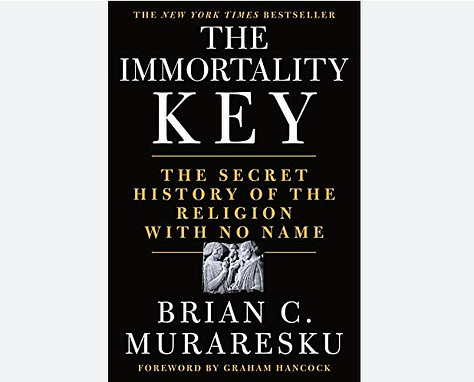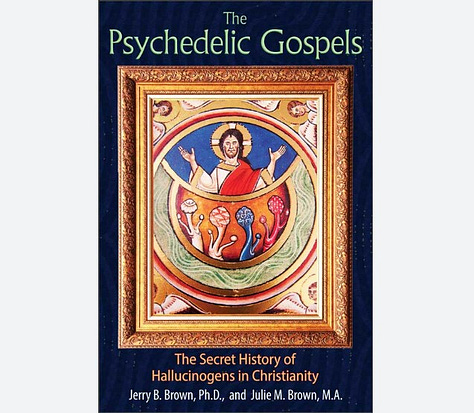Who is Santa Claus?
The Philosophy Behind the Myth
Welcome to Polymathic Being, a place to explore counterintuitive insights across multiple domains. These essays take common topics and investigate them from different perspectives and disciplines to come up with unique insights and solutions.
Today's topic is holiday inspired and investigates the history behind Christmas, the fusion of traditions, who Santa is, how it ties into our culture, and what it all means for us throughout the year.

When I was a child I was raised in a very Christian family. We didn’t celebrate Halloween because of the underlying paganism, and for years, didn’t have a Christmas tree because the reason for the season was Christ. As such, I never really got deep into the Christmas lore beyond the commercial veneer and so I missed out on a lot of the traditions, history, and meaning behind the character.
I had a bias against Santa because he wasn’t ‘real.’ I didn’t like that, based on this myth, we’d lie to our kids, and then watch as their belief was crushed by reality. I wasn’t comfortable with the idea that we’d teach kids to believe in one higher power, prove it was a lie, and then expect them to believe in another higher power. It bothered me that the Santa tradition appeared to be a house of cards built on lies and that wasn’t what I wanted with my kids. At times, I was vocal about this on social media:
This Facebook post highlighted my angst. I didn’t, and still don’t like this specific manifestation of the Santa myth and that fueled my desire to purge these traditions in an attempt to find the Truth. At the time of that post, my wife and I were doing a polymathic investigation in the Bible based on 2 Timothy 2:15, summarized as “Study to show yourself approved.” This led us to a religious affiliation loosely referred to as Hebrew Roots which aimed to strip off the non-biblical, and therefore pagan, traditions.
The problem is, the Truth is a slippery object and the more we studied, the more we continued to find layers of extra-biblical and questionable influence. In working to get away from the pagan-influenced holidays, specifically Halloween, Christmas, and Easter, we focused on the biblical holidays from the Torah of Passover, Feast of Unleavened Bread, Pentecost, Feast of Trumpets, Yom Kippur, and Sukkot.
However, as we dug deeper into these celebrations we ran into the same problem. For example, Sukkot is the Biblical fall feast and represents a time to celebrate the harvest, take a break, and get outside. It also signifies God’s tabernacle or dwelling with his people. I thought it was a perfect replacement for Halloween. The issue was, as we dug into the traditions and ceremonies of this feast, we found it rife with Mesopotamian fertility rituals none of which are detailed in the Bible. And lest you think the Bible skips over rituals, just take a peak at the temple rituals depicted in Exodus and Leviticus. Bottom-line, the deeper we dug, the more we found that it was an infinite regress; basically turtles all the way down.
We determined that since you couldn’t go down to find the truth, we decided to pull back up and better understand the Christmas traditions that existed, and learn more about why they existed.
Why these Traditions?
For a holiday supposedly rooted in the birth of Christ, it was peculiar that the Hebrew traditions from which Jesus came did not have a winter solstice celebration. Their festivals tend to group around the spring and fall equinoxes.
It’s interesting to consider that based on the Hebrew festivals, Jesus would likely have been born around the time of Sukkot as the tradition was that people went back to their hometowns for the celebration. This would have made the alignment of Herod’s census line up with the travels of Mary and Joseph as well as explain why there was no room in the inn if a lot of people were traveling as well. Another interesting alignment is that, in Hebrew, Mish-kan (tabernacle) means the dwelling or settling, and denotes the dwelling or settling of the Divine Presence of God. So what better time for the son of God to be born? But I digress.
When the Roman Empire converted to Christianity, they had to do something about their solstice celebrations along with the myriad of other winter celebrations of their European provinces, specifically Saturnalia and Yule. It’s from these traditions that we get wreaths, candles, feasting, and gift-giving as well as mistletoe, yule logs, and decorating trees. Pair this with the new Hebrew-derived messiah and the traditions of the Nativity, Maggi, and Christianity and we end up with Christmas. But where in all this does Santa come into the mix?

The Origins of Santa
Fundamentally, Santa reflects 2000 years of cultural fusion where Saint Nicholas, known for giving gifts, is merged with many Germanic and Norse traditions and combines various traditions and names like Father Christmas, Saint Nicholas, Saint Nick, Kris Kringle, and more. The giving of gifts becomes a smooth transition between the three wise men of the Bible Story with the traditions of gifts from Saturnalia. Fusing it all together into a Christian Saint provides an acceptable anchor to tie in all the rest of the winter solstice traditions to make everyone happy.
In this fusion, it’s intriguing to see the odd elements that get brought in without understanding the larger histories, specifically around shamanism, that are behind them. Things like the elves, reindeer, mistletoe, and the reds and whites of the costume itself. For example, as explored in Santa Claus the Magic Mushroom and the Psychedelic Origins of Christmas:
The shaman would collect the mushrooms, which grow almost exclusively under pine trees, in a large sack, and would often use an opening in the roof to deliver his gifts, as the vast amount of snow would block the door. During Siberian winters, the snow piles up past the doors of the villagers’ yurts, so the red and white clad shaman must climb down the chimney to deliver the presents in his sack. Once the shaman has done the rounds of delivering the Amanita Muscaria, the villagers string the mushrooms up or put them in bags hung in front of the fire to dry. As well as this, when mushroom gatherers would go out and pick the mushrooms they would often place them on the leaves of the trees in the forest to dry them out in the sun.
While we may have lost this aspect of Christmas to history, it actually has synergy with recent investigations into the story of Christ as explored in three books:



These books discuss a fusion of Hebrew-based Judaism with Mediterranean Gnosticism and a smattering of other cultures. Again, as we found in our theological adventure, it’s turtles all the way down!
So now we have a better understanding of the fusion of Christmas and a common thread between the traditions of shamanism and Christianity but where does that leave us? Interestingly enough, I propose it leaves us with an understanding that Santa is also a Christ-type figure of a benevolent man who judges naughty and nice:
I think the main point to remember about Santa (and I daresay Christianity) is that the story is never intended to be True! It’s intended to be representative of a philosophy, a mindset, a higher calling, and an aspiration all wrapped up in a celebration of life, family, grace, and fun during the darkest, and coldest time of the year where these celebrations originated.
So if Santa isn’t true, and is instead supposed to represent something more, then what does that imply for our current Christmas celebrations? Fundamentally that’s what Theodor Geisel aka, Dr. Seuss, was wrestling with when he wrote The Grinch Who Stole Christmas because he felt like he was the Grinch as he related in a 1957 interview with Redbook:
"I was brushing my teeth on the morning of the 26th of last December when I noted a very Grinchish countenance in the mirror" "Something had gone wrong with Christmas, I realized, or more likely with me. So I wrote the story about my sour friend, the Grinch, to see if I could rediscover something about Christmas that obviously I'd lost."
What Dr. Seuss, through the Grinch, found is that Santa, like the Christ of the Bible, is someone we look to emulate. Just like Christian means Christ-like, Santa represents the good to aspire to as the complete counterpoint to the Grinch, or Ebeneezer Scrooge, of the Holidays.
This is what I also discovered as I exited my theological study and stopped avoiding Christmas out of our worry of paganism. We came away realizing that religion is more of a psychology than a theology. We stepped back and started looking at the underlying themes and lessons of what these theistic religions were attempting to teach us. This is nicely summarized:
Is what you believe, and where you place your faith, enabling you to become a better person and allowing you to add positive energy to the world around you?
In this manner, we embraced Santa as the positive manifestation of both ourselves and our impact on others. We also began promoting the tradition of Santa to the kids. We don’t lie to them; we let them in on the secret of who Santa is when they’re old enough to ask. We then encourage them to be Santa-like and, in doing so, they actually become the essence of the spirit we look for in the holiday.
I still have angst about the application of Santa that the Facebook post above describes but now, instead of thinking it’s a lie, I just feel bad that they’re missing the deeper, and richer meaning behind who Santa is (as well as all the really fascinating connections that come with it!) In the end, I went from rejecting Santa because it wasn’t true, to accepting what it represents and working to make it true in my family’s life.
Merry Christmas! I wish you all the best as we strive to become better year after year and add positive energy to the world around us!

Enjoyed this post? Hit the ❤️ button above or below because it helps more people discover Substacks like this one and that’s a great thing. Also please share here or in your network to help us grow.
Polymathic Being is a reader-supported publication. To receive new posts and support my work, consider becoming a free or paid subscriber.





This essay on the same topic just dropped from one of my favorite substacks. The Free Press by Bari Weiss
https://www.thefp.com/p/was-santa-actually-a-mushroom-tripping/comments
I love this one each time I read it!